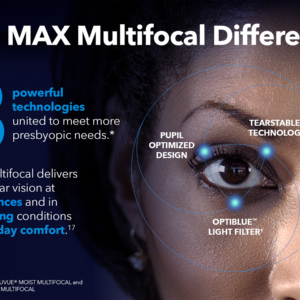April 25, 2023
Optometry can learn from dermatology, dentistry, plastic surgery, and many other medical specialties that are converting to a fee-for-service philosophy. Optometry remains so dependent on vision insurance plans that 85% of our patients present with a reduced exam fee. This is so pervasive and has such impact on our practices that there is even some debate about whether this is truly insurance or just a discount eye exam plan. Still, most practices, including myself, are extremely happy to accept these because they do bring us volumes of patients.
However, the eye exam reimbursement from vision plans are at best marginal. While they do help fill our practice with many great patients, expenses and inflation have far exceeded the increases in payment by managed care companies. So, in order to maintain an effective and profitable primary care practice, the addition of fee-for-service procedures paid for by our patients and medical management with payments covered by medical insurance is mandatory.
Private Pay Opportunities Abound
However, while times are changing, and other medical specialties are converting to private pay practices, we, the majority in optometry, have not adopted or developed a patient pay practice. It’s not because the opportunity is not there. We are very fortunate in optometry to have opportunities to be part of a fee for service and medical billing practice philosophy. Contact lenses, dry eye, aesthetics, pharmacological treatment of presbyopia, and myopia management, are just a few of the opportunities for private pay medical or clinical procedures.
“Generation 45+” represents one of your best opportunities for private pay. Review of Presbyopia and the Aging Eye covers the 45+ patients, the individuals who have the financial ability to cover these expenses. They have the desire to live healthier and overall better lives, and they are willing to accept and pay for any procedure that helps them achieve these goals.
Success Rates Improve with Fee for Service
Take, for example, multifocal contact lenses for Generation 45+. Many companies are manufacturing multifocal lenses for this demographic, yet the percentage of success in most practices is less than 20%.
In my practice, as well as for my three optometric children, we have a success rate that exceeds 85%. As I’ve stated in the past, I believe this has to do with time, expertise, and the ability to charge an applicable fee for the time and expertise needed.
I have interviewed doctors who charge from $75 to more than $1,365 dollars for multifocal contact lens evaluations. The success rates of these practices that I have interviewed seems to be directly related to the amount of fees charged. This does not mean that charging more provides for a greater success rate, it means the doctor and staff are putting in the time and expertise needed to make sure that modality is successful.
This also does not mean you can increase your fees and you’re going to be more successful. These doctors understand the specialty of multifocal contact lenses and what is needed to create a successful outcome. The majority of these doctors also use multiple types of multifocal contact lenses, including custom multifocal contact lenses. It’s understanding the specialty and the ability to create that fee-for-service philosophy that allows you to correlate your fees to your expertise, your time, and your success rate.
One Example of a Successful Private Pay Practice
Here’s an example of the most successful practice of a friend of mine. Yes, it is in New York City, but keep in mind, in New York you can go on any block and receive a $75 evaluation, so it is actually more difficult to have these fees. Please observe all the testing, procedures, and time allocated to achieve success.
Multifocal Contact Lens Fees
Consultation fee $390: slit lamp exam, refraction, topography, anterior segment measurements, discussion of patient’s needs and expectations, application of one pair of lenses to assess initial fit and visual prognosis
Diagnostic evaluation $405: 60-90 minutes to use multiple types of contact lenses
Dispensing visit $190: 30-60 minutes or as much as needed over multiple sessions.
Insertion and removal instruction; this fee is adjusted to time needed.
Professional Care Plan $370: Includes two scheduled progress visits semi-annually (after satisfactory fitting) plus one unscheduled problem-focused visit if necessary.
Totals:
$1,365 for a new contact lens wearer
$1,175 for a new multifocal evaluation
This does not include lens fees. Success rate greater than 75% and no refunds on failures.
Are you spending this amount of time, testing and expertise with your mutifocal contact lens patients? If not, a fee-for-service model will enable you to do so and create a healthier eye care service overall.
When re-engineering your contact lens evaluation, you should use this as a model and examine what you can charge for each of these levels of care. Delivering a higher level of care leads to a higher success rate, and I challenge you to reach for that 85% multifocal contact lens success rate.




